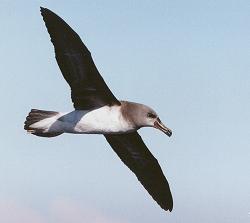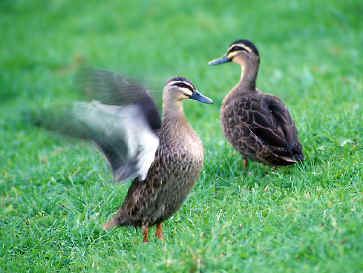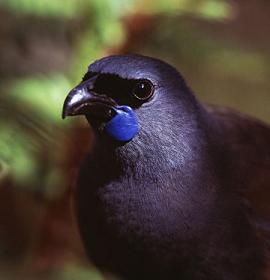4:00AM Thursday Apr 16, 2009
By Eloise Gibson NZ Herald
Three new birds have joined the ranks of New Zealand's most endangered, but others are coming back from the brink thanks to the care of conservationists.
A three-yearly review to help find which birds most need conservation money has added the grey duck, the eastern rockhopper penguin and the grey-headed mollymawk to a list of "nationally critical" birds.
None of the 21 birds in the most threatened category three years ago - including the kakapo, takahe, black robin and fairy tern - has increased enough to get off the list.
But the leader of the review panel, the Department of Conservation's Dr Colin Miskelly, said populations of birds such as kiwi, kokako and takahe were increasing in managed and protected forests.
For the first time, the endangered bird list included a new category - "recovering" birds.
These are species with a population of at least 1000 that are increasing because of conservation measures. Little spotted kiwi, brown teal and north and south island saddlebacks are in that category.
Dr Miskelly said kokako and kiwi had reached the point where the managed populations were growing fast enough to balance or nearly balance the decline in populations not protected from predators.
He said the picture was bleaker for the three new entrants to the threatened list, which were not as easy to manage.
"The grey duck is probably the most concerning of all, because the threats to it are so pervasive and unmanageable that we really don't have a formula for how to turn the tide."
Grey ducks were under threat from cross-breeding with mallards, which had now reached all major habitats, he said.
Meanwhile eastern rockhopper penguins were having to swim further to get food for their young, most probably because of either overfishing or changes to ocean currents caused by global warming.
"It may be in the past they had to swim 20km to a productive feeding area and now they have to swim 100km. Just the energetic cost of swimming that far and back again carrying food for their chicks could be the difference between them breeding or not."
Of the 428 species and subspecies assessed, 77 were threatened and 93 at risk. Overall, 19 improved their status since 2005 and 13 - mostly seabirds and birds that breed in riverbeds and rough farmland - were worse.





Comments